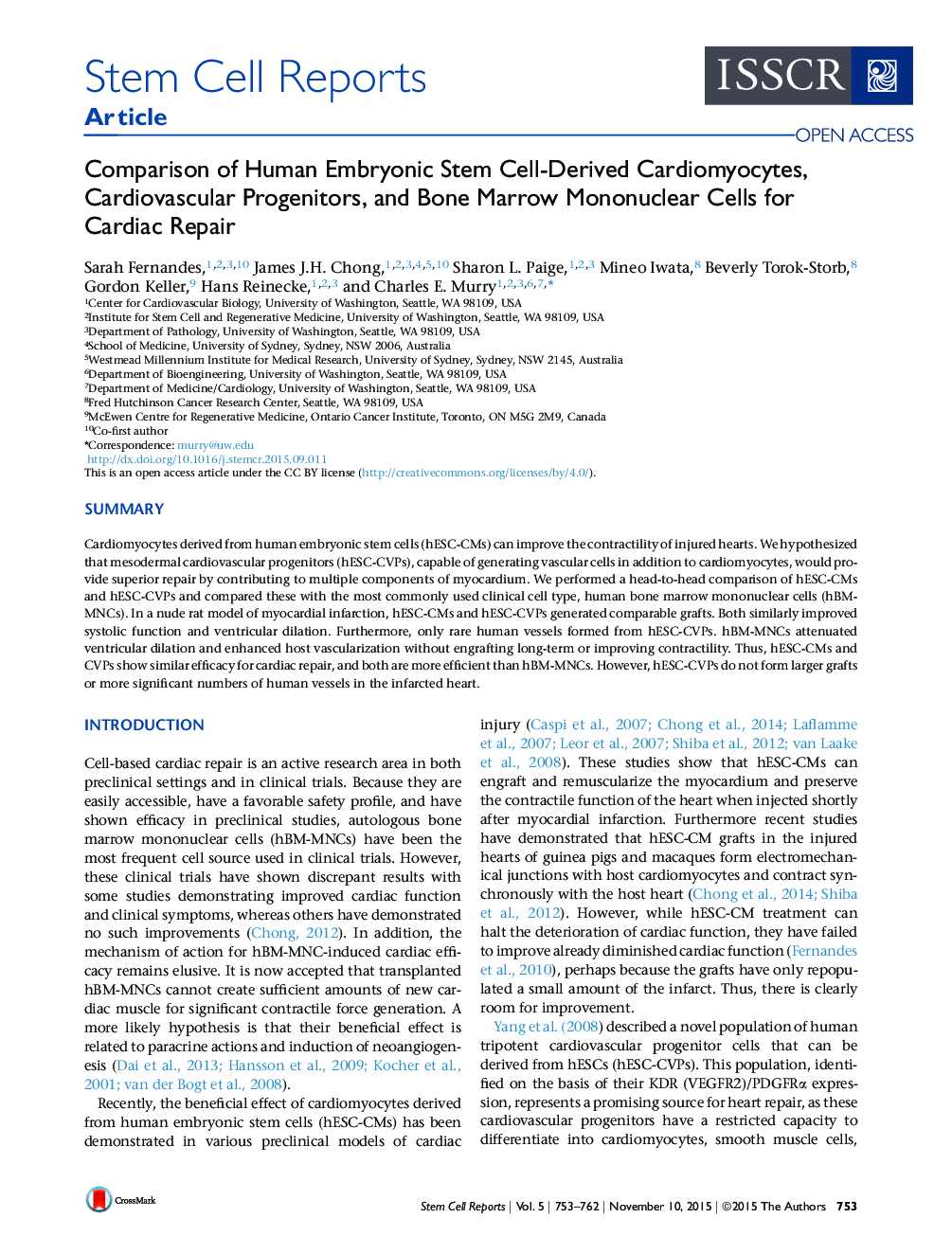| Article ID | Journal | Published Year | Pages | File Type |
|---|---|---|---|---|
| 2093749 | Stem Cell Reports | 2015 | 10 Pages |
•Transplantation of hBM-MNCs can halt the negative remodeling of the infarcted heart•Both hESC-derived cardiovascular progenitors and definitive cardiomyocytes improve contractility•hBM-MNCs lead to greater vessel number than hESC-derived cells
SummaryCardiomyocytes derived from human embryonic stem cells (hESC-CMs) can improve the contractility of injured hearts. We hypothesized that mesodermal cardiovascular progenitors (hESC-CVPs), capable of generating vascular cells in addition to cardiomyocytes, would provide superior repair by contributing to multiple components of myocardium. We performed a head-to-head comparison of hESC-CMs and hESC-CVPs and compared these with the most commonly used clinical cell type, human bone marrow mononuclear cells (hBM-MNCs). In a nude rat model of myocardial infarction, hESC-CMs and hESC-CVPs generated comparable grafts. Both similarly improved systolic function and ventricular dilation. Furthermore, only rare human vessels formed from hESC-CVPs. hBM-MNCs attenuated ventricular dilation and enhanced host vascularization without engrafting long-term or improving contractility. Thus, hESC-CMs and CVPs show similar efficacy for cardiac repair, and both are more efficient than hBM-MNCs. However, hESC-CVPs do not form larger grafts or more significant numbers of human vessels in the infarcted heart.
